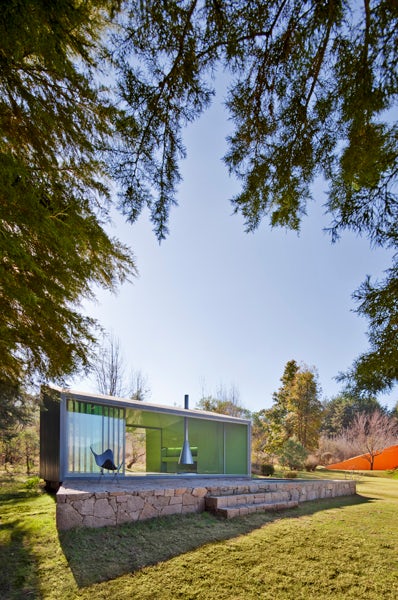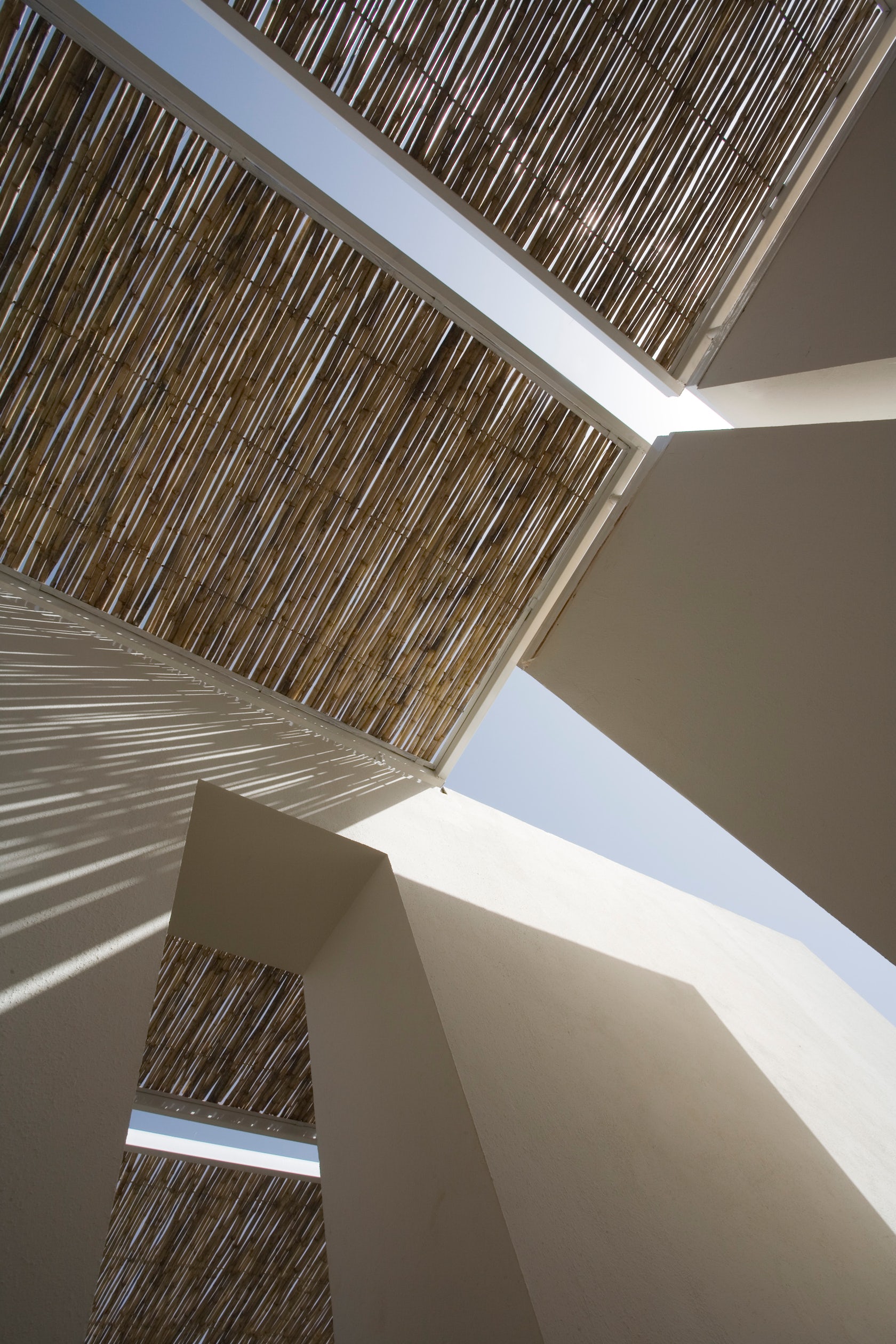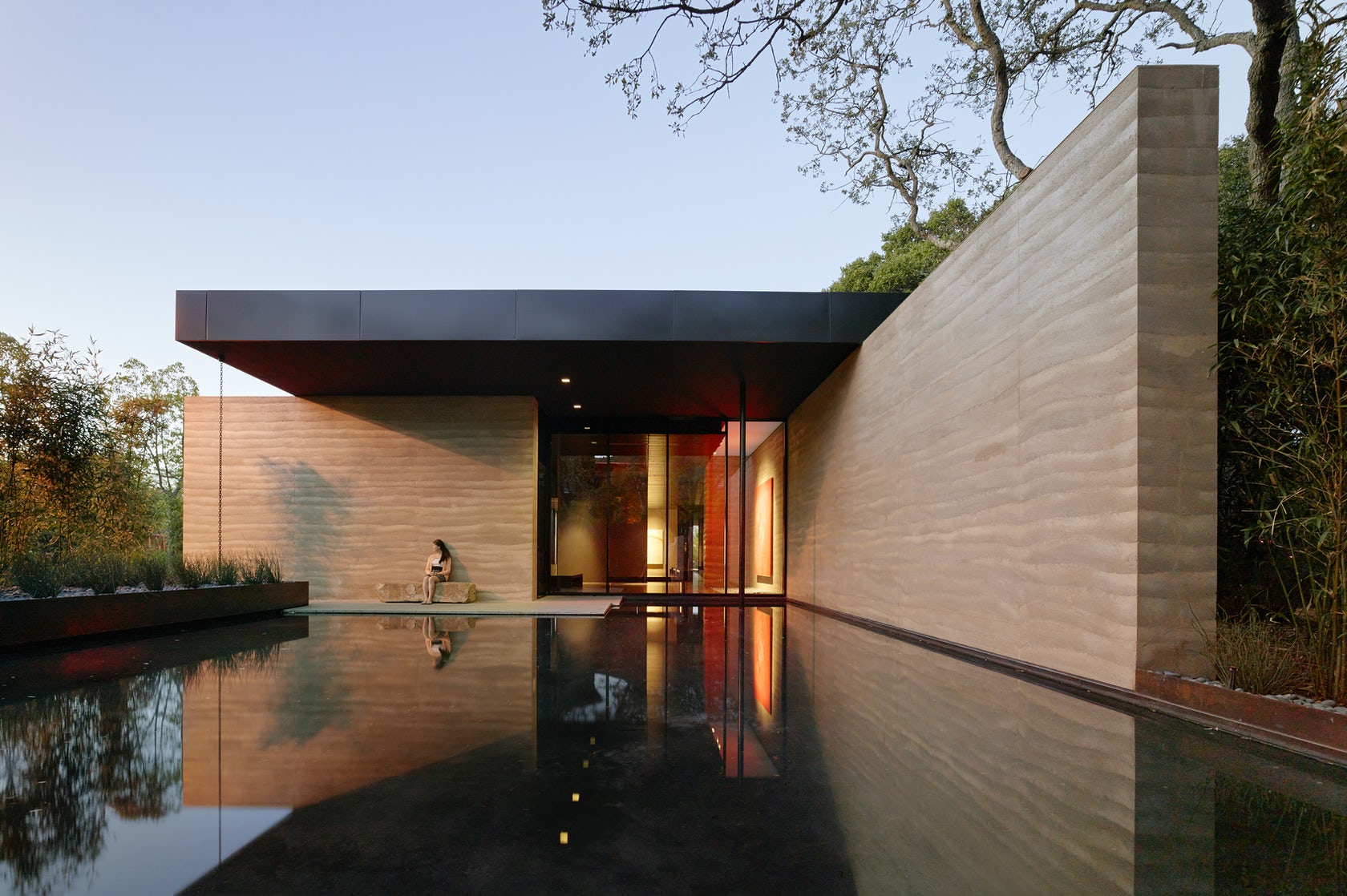Architizer's new image-heavy daily newsletter, The Plug, is easy on the eyes, giving readers a quick jolt of inspiration to supercharge their days. Plug in to the latest design discussions by subscribing.
Under most circumstances, entire buildings, sections within, and individual rooms are designed specifically for how they are intended to be used — generally speaking, how it all fits together. More uncommon are spaces with a primary purpose based on experience or observation. That is to say, an architectural construct that is not designed for efficiency or use, but more ephemeral, atmospheric qualities.
That said, a prime example of spaces that are preoccupied with these more tonal and ambient facets are those designed for solitude and reflection. Effectively, spaces constructed for meditation are secluded to create a truly intimate atmosphere inside. In effect, the end goal is for the architectural space to induce a similar mental space: one that is a total togetherness of architecture, the body, and the mind.
This collection of meditation pavilions surveys spaces created out in the open, surrounded by nature, and distanced from the buildings, rooms, and places we occupy daily. Located within whatever natural landscape to its given locality, these seven projects demonstrate just how an aura, character, feeling, tone, and quality can be carefully designed, so to speak, in the back of the woods.

© Matthew Millman Photography

© Matthew Millman Photography

© Matthew Millman Photography
Windhover Contemplative Centerby Aidlin Darling Design, Stanford, Calif., United States
Located on the Stanford campus, this contemplative center and spiritual retreat was designed to promote and inspire quiet reflection and provide refuge from the intensity of day-to-day ongoings. To be optimally tranquil, the space inside is outfitted with Nathan Oliveira’s Windhover paintings, natural light beaming in from louvered skylights, rammed earth walls, wood surfaces, and water elements that heighten the visitor’s sensory experience acoustically, tactilely, and visually.

© VLLNNA, Petr Sindelar

© VLLNNA, Petr Sindelar

© VLLNNA, Petr Sindelar
Gazebo Kijukiju WIND by VLLNNA, Petr Sindelar, Černošice, Czech Republic
This sauna-gazebo hybrid was atmospherically designed for meditational transcendence: to gain perspective, to breathe, and to achieve a tranquil state. With a careful selection of materials paired with careful craftsmanship, the wood-fired sauna without grid power is ambient with natural light.

© PLANT - Atelier Peter Kis

© PLANT - Atelier Peter Kis

© PLANT - Atelier Peter Kis
Japanese Garden – Budapest Zoo by PLANT – Atelier Peter Kis, Budapest, Hungary
Perched atop the hillside originally created from the debris of the zoo and its surroundings after World War Two, this Japanese Garden was designed in respect to traditions of authentic Japanese gardens. That said, the structure is made up of a frameless, curved glass wall that winds between wooden posts, giving the bonsai protection from incautious visitors and ephemeral space for solitude and reflection.

© Uhlik Architekti

© Uhlik Architekti

© Uhlik Architekti
FOREST retreat by Uhlik Architekti, České Budějovice, Czech Republic
This hideaway located in the countryside was constructed from wood from a nearby forest and local sources from local craftsmen. Resting freely on boulders with a stern raised on a huge boulder, the enclosed black pavilion made of charred wood contains one interconnected multi-functional room with standing space, a view, seating benches, and a double bed.

© Parque Humano

© Parque Humano

© Parque Humano
Pabelllon en el Bosque by Parque Humano, Valle de Bravo, Mexico
Conceived in relation to architectural form as well as sculptural form in order to stimulate sensory visuals, this pavilion is deliberately positioned in a large plot of land that follows the path of an existing pine tree valley. Inside, visitors become aware of the constant flux and flow of changing light and the position of the sun apparent in the reflection and transparency of the glass.

© Meir Lobaton Corona

© Meir Lobaton Corona

© Meir Lobaton Corona
Outside-In by Meir Lobaton Corona, Chaumont-sur-Loire, France
Designed as a visual paradox, “outside-in” is a garden within a garden, a cubic contemplative space wrapped in a translucent white skin. When gazing into one of the peepholes, the inaccessible chunk of forest contained within is reflected in two-way mirrors lined along the interior — the seemingly infinite forest is cast in all directions.

© Marcello Bonfanti

© Marcello Bonfanti

© Marcello Bonfanti
Prayer and Meditation Pavilion by studio tamassociati, Khartoum, Sudan
As an extension of the Cardiac Surgery center in Sudan, this tranquil structure is formed by two unaligned white cubes containing two trees that make the space ‘sacred’ as natural elements inside artificial spaces. Outside, the large water pool creates a physical barrier between the hospital and the meditation space housed beneath the venetian blind patterned lighting filtering through the palm leaf stock clad roof.
Architizer's new image-heavy daily newsletter, The Plug, is easy on the eyes, giving readers a quick jolt of inspiration to supercharge their days. Plug in to the latest design discussions by subscribing.









